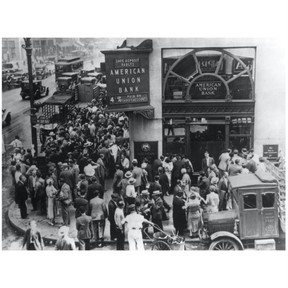
Causes of the Great Depression
I can explain how certain economic practices and government policies led to the



8,000 schools use Gynzy
92,000 teachers use Gynzy
1,600,000 students use Gynzy
General
The lesson focuses on the causes of the Great Depression and explains that as the prosperity of the 1920s ended, severe economic problems gripped the nation. Causes such as inflated stock prices, overproduction, high tariffs, and mistakes by the federal reserve are discussed.
Learning Objective
Students will be able to examine how the economic practices of the 1920s contributed to the coming of the Great Depression.
Introduction
Students will be given a brief background of the Great Depression. They will be asked some questions before beginning the lesson, “What do you know about the Great Depression?” and “What events do you think led to the Great Depression?”
Instruction
Begin by going through the election of 1928 and the long bull market. Explain the events of Black Tuesday and share that this signaled the start of the Great Depression in the United States. After this, discuss how businesses and banks failed, then have students fill in the graphic organizer to list the causes that led to the stock market crash. Discuss struggling industries like railroad and textile industries as well as automobiles and construction. Explain how agriculture demands fell drastically, leading to deflation, and discuss how many people at the time were living on credit, unable to pay what they owed. After this, talk about the purpose and failure of the Hawley-Smoot Tariff as well as the actions of the Federal Reserve.
Quiz
Check student understanding with ten multiple-choice and true or false questions.
Closing
Students will pretend they are living during the time of the Great Depression as a reporter for a large newspaper. They will write a short article explaining what caused the Great Depression.
The online teaching platform for interactive whiteboards and displays in schools
Save time building lessons
Manage the classroom more efficiently
Increase student engagement
Discover more!
About Gynzy
Gynzy is an online teaching platform for interactive whiteboards and displays in schools.
With a focus on elementary education, Gynzy’s Whiteboard, digital tools, and activities make it easy for teachers to save time building lessons, increase student engagement, and make classroom management more efficient.



